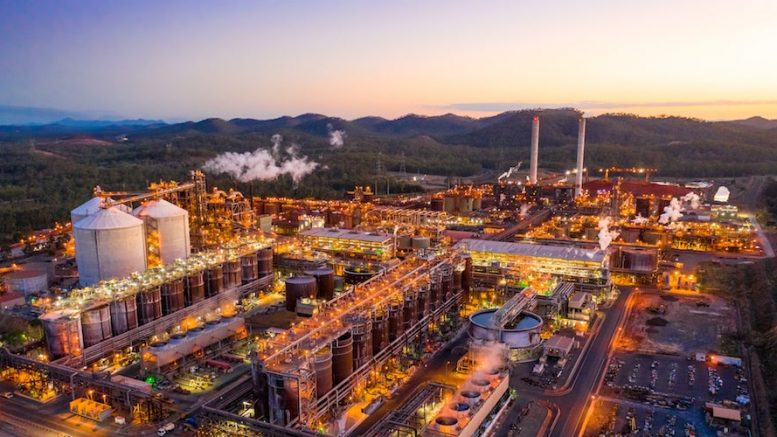Rio Tinto (NYSE: RIO; LSE: RIO; ASX: RIO) and Sumitomo Corp. announced today that they will jointly study the construction of a hydrogen pilot plant at Rio Tinto’s Yarwun alumina refinery in Gladstone, Australia.
Sumitomo had been carrying out studies already into building a hydrogen plant, but hadn’t chosen a location. Rio Tinto, in turn, recently started a feasibility study into replacing natural gas with hydrogen in the alumina refining process.
If the partners choose to proceed, the pilot plant would produce hydrogen for the Japanese miner’s Gladstone Hydrogen Ecosystem project, which is also located in Queensland’s Gladstone, a traditional coal and gas hub.
Green hydrogen — produced by stripping the gas from water using electrolyzers powered by wind and solar — is seen as key to eliminating carbon emissions from the industrial sector.
Most Australian mines are already transitioning to renewable power and either turning to or expanding electric vehicles floats. Hydrogen is the next frontier.
“Reducing the carbon intensity of our alumina production will be key to meeting our 2030 and 2050 climate targets,” Rio Tinto Australia CEO Kellie Parker said in a statement. “There is clearly more work to be done, but partnerships and projects like this are an important part of helping us get there.”
Energy hungry regions, particularly in northeast Asia and Europe, lack the natural resources to generate large scale clean energy. This is particularly true in Japan, where nuclear energy has become politically and practically toxic.
The answer, as the country has very publicly committed to, is to transition to 100% green ammonia, which is the demand the growing number of large-scale green hydrogen projects in Australia are looking to meet.


Be the first to comment on "Rio Tinto, Sumitomo to assess hydrogen plant at Yarwun refinery"